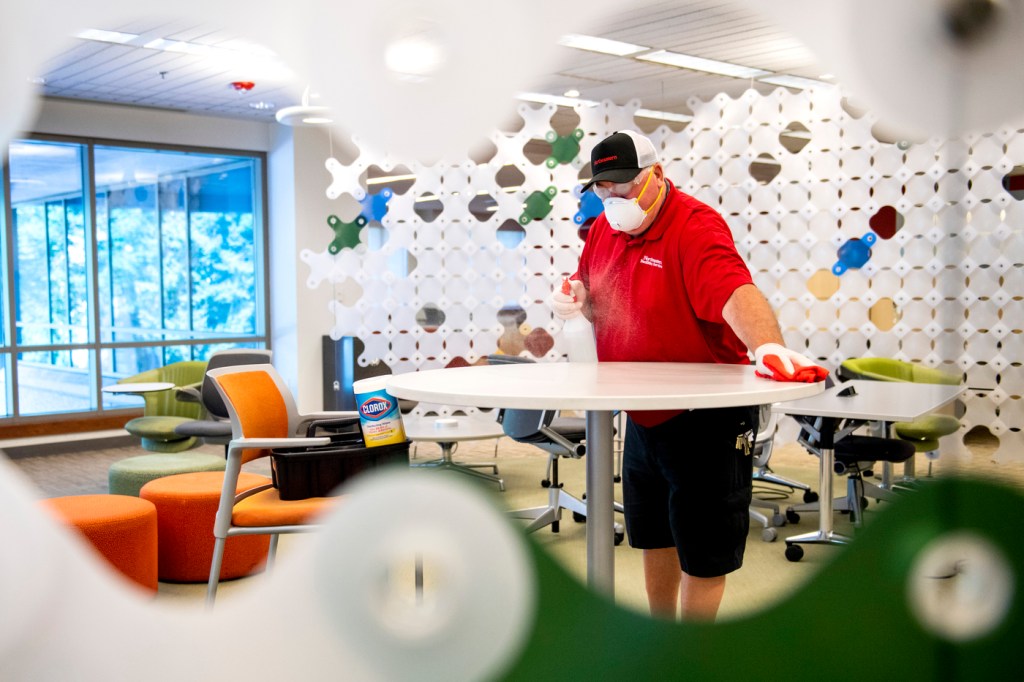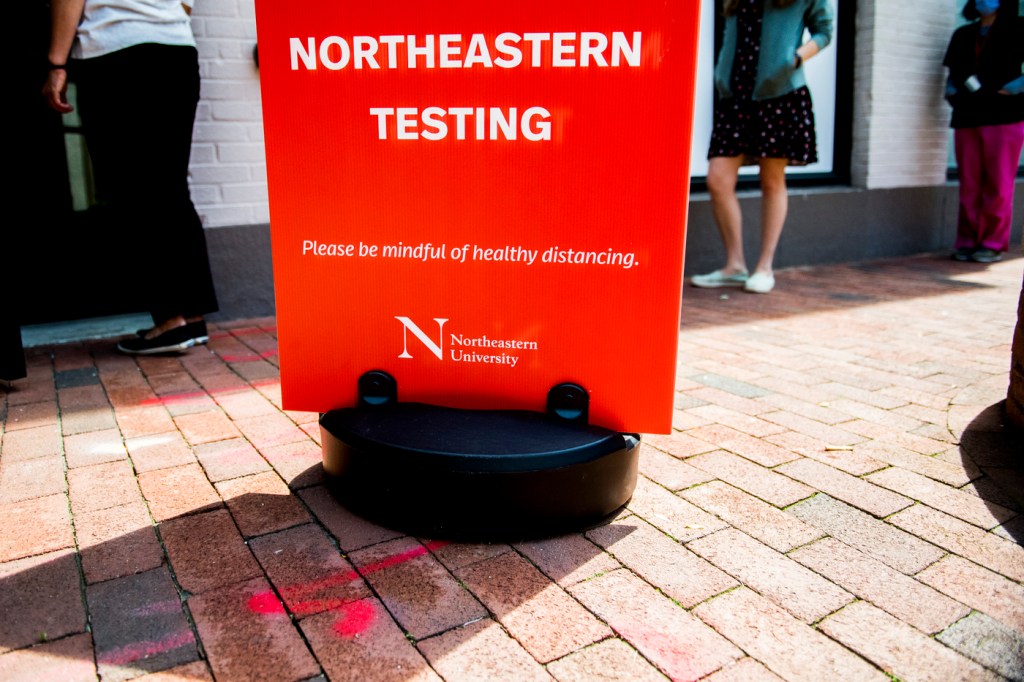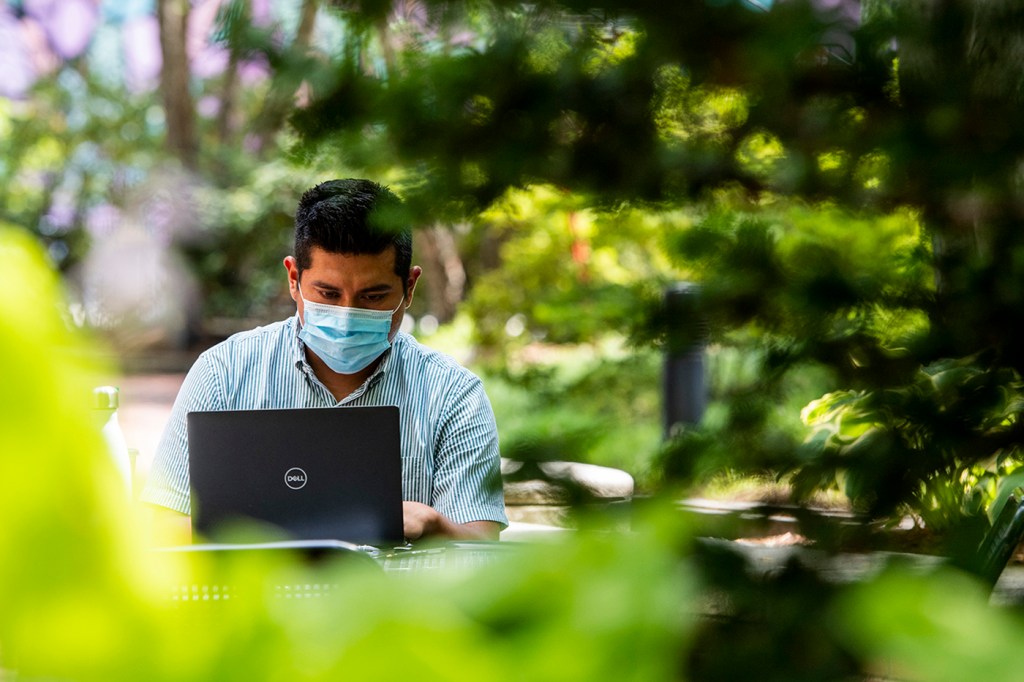Northeastern’s Children’s Center to reopen with new health and safety protocols
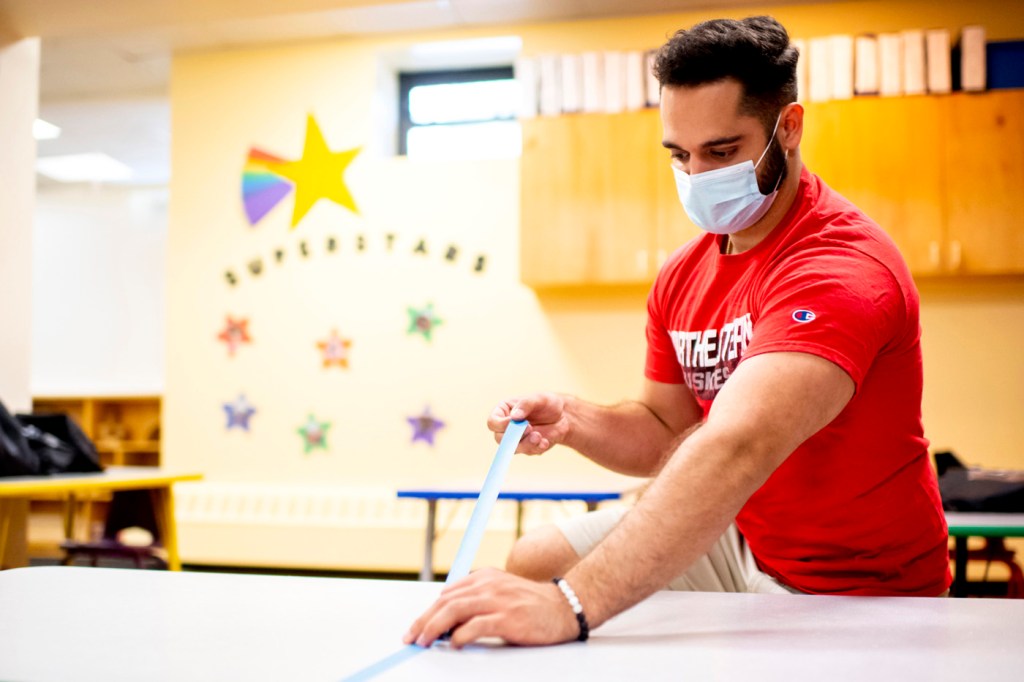
The Russell J. Call Children’s Center on Northeastern’s Boston campus will reopen for child care on Monday, Aug. 10, following state and local guidelines as well as the university’s robust sanitation protocol to keep children, parents, staff, and the surrounding communities healthy.
The center will have the capacity for 30 children this summer, and will feature new, staggered drop-off times, plexiglass walls to divide the space, reduced seating at tables, rigorous sanitation, and other health and safety procedures, says Regina Nazzaro, director of the children’s center.
“We are doing everything we can to keep the children healthy and happy, and to keep parents and staff safe,” Nazzaro says.
The children’s center at Northeastern closed on March 12, along with the rest of the Boston campus, in accordance with public health guidelines designed to reduce the risk of spreading COVID-19.
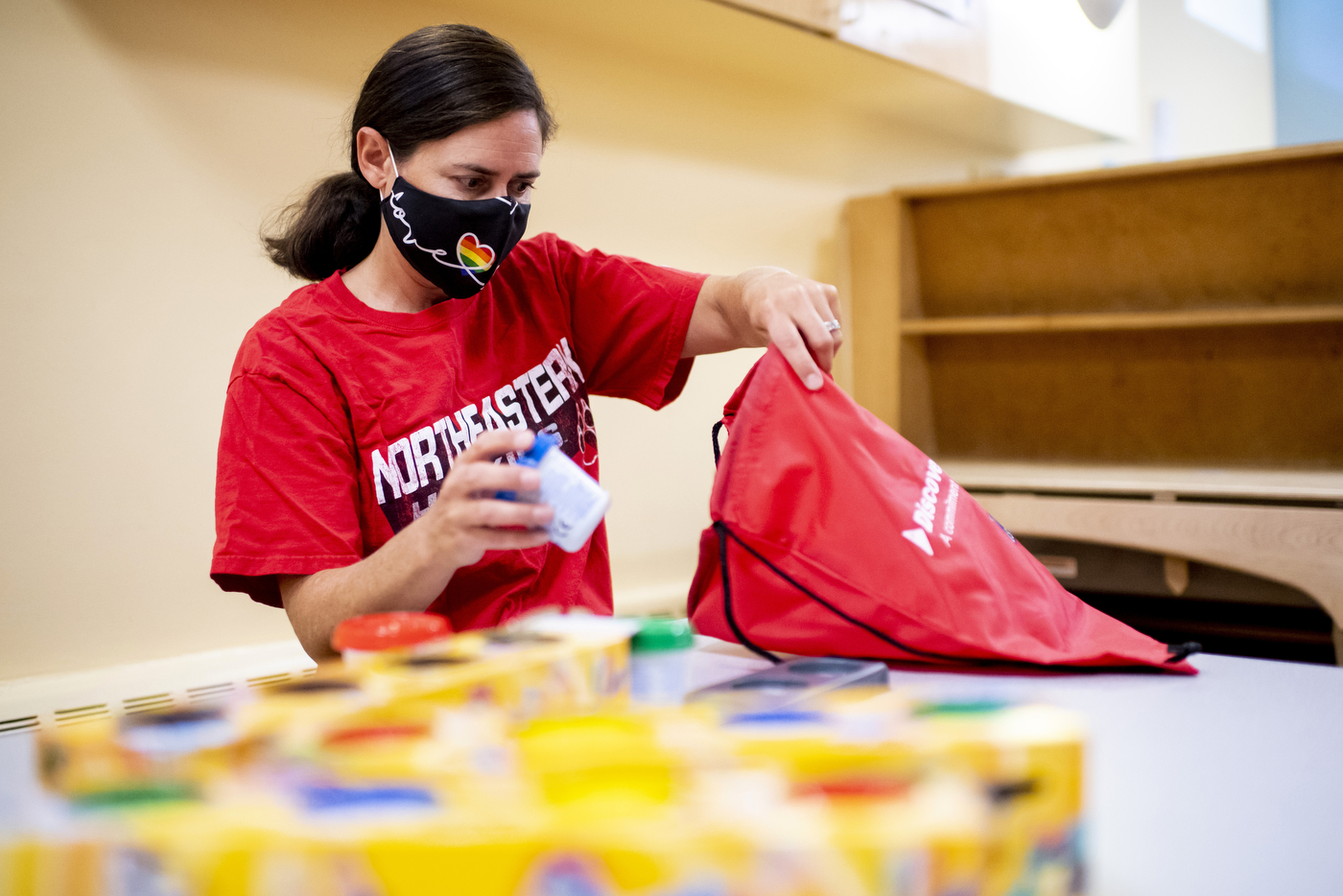
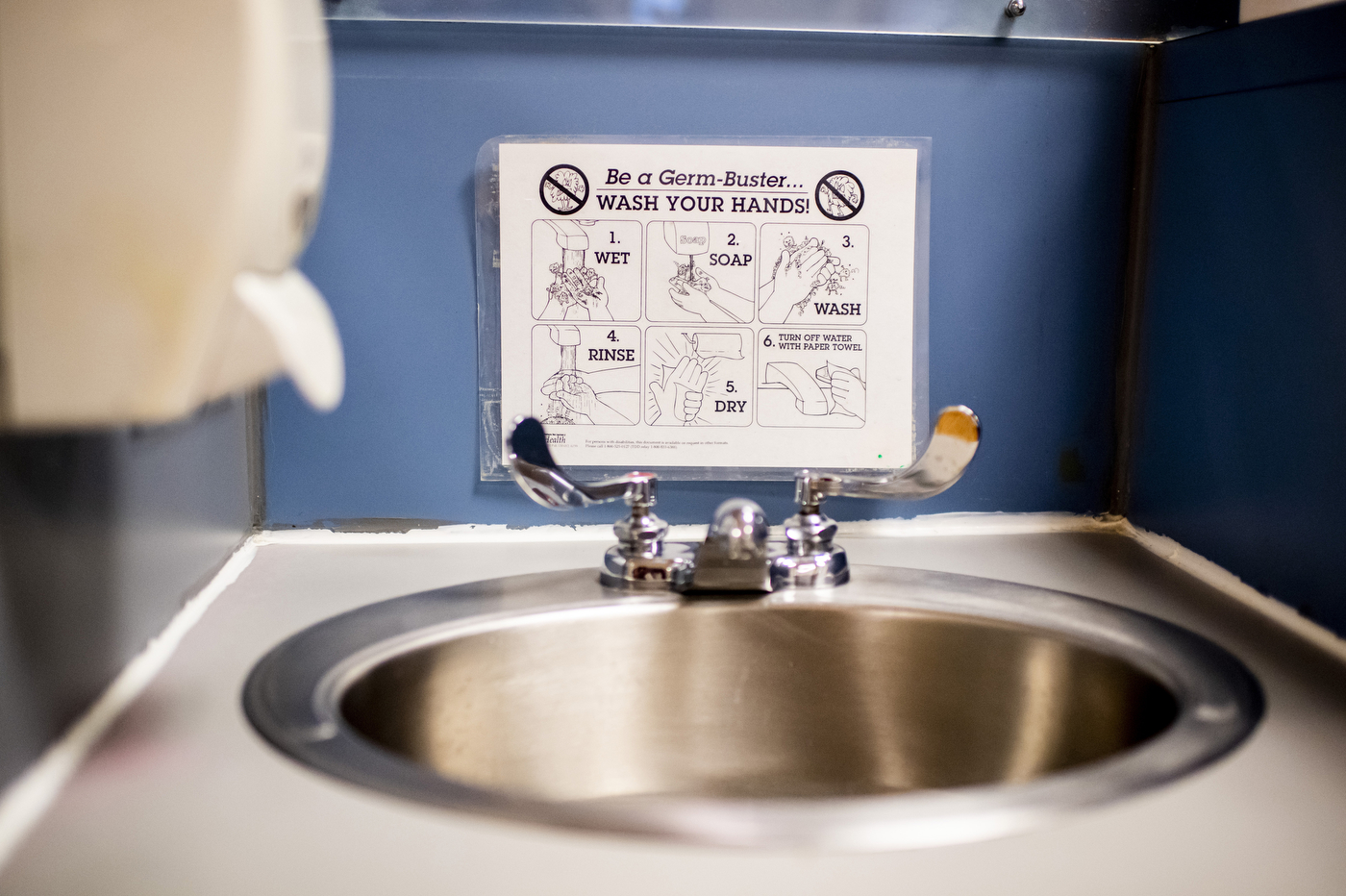

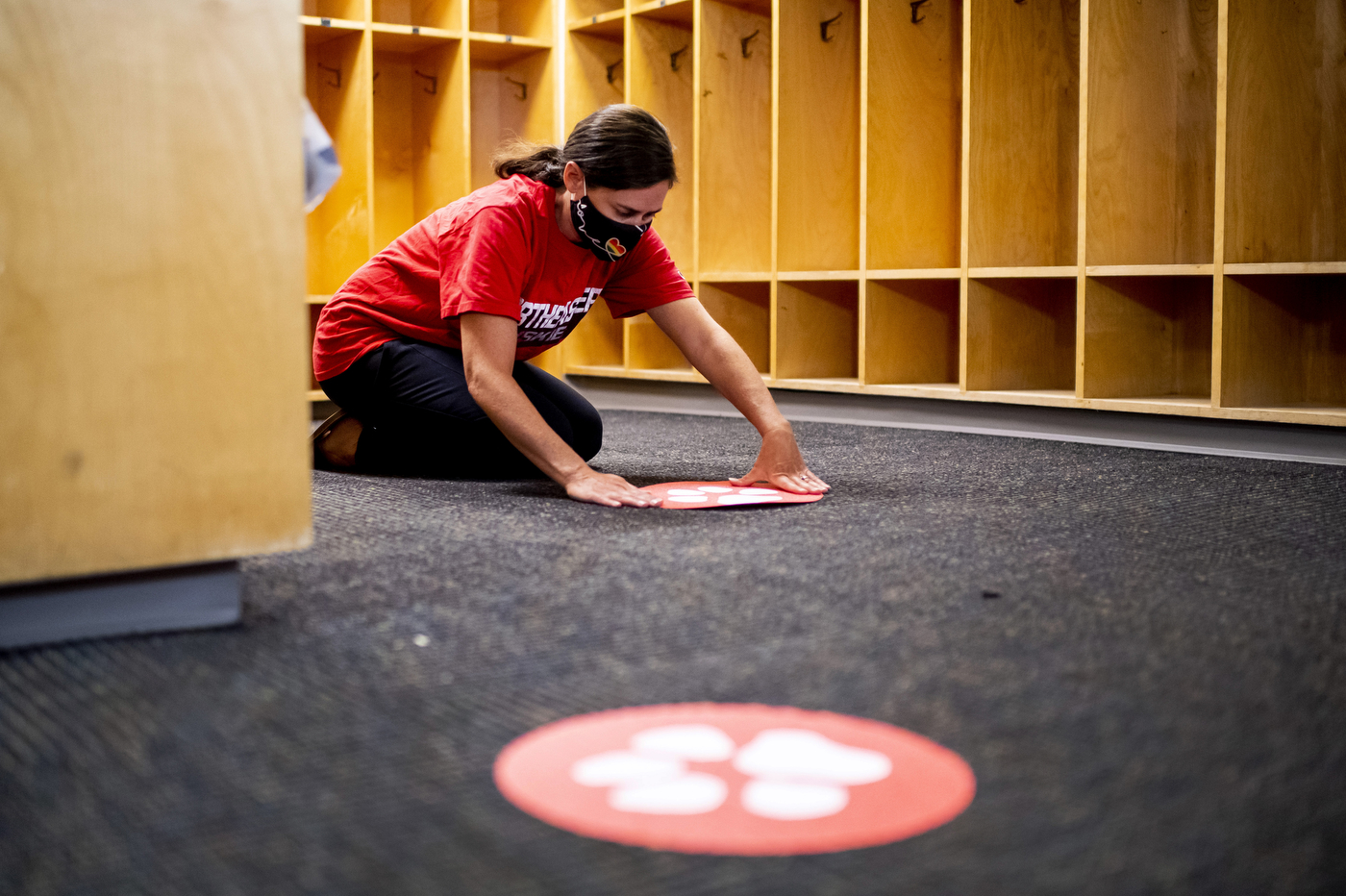
To reopen, the center is implementing Northeastern’s robust health and safety measures, which include rigorous cleaning, sanitation and ventilation protocols to support clean spaces and a healthy airflow across academic and administrative buildings. The university wants to create a space that feels welcoming, despite the unusual circumstances.
The center is also following requirements set forth by its licensing agency—the Massachusetts Department of Early Education and Care—as well as guidelines set forth by the Centers for Disease Control and Prevention. The requirements by the commonwealth’s department are continuously updated, and will likely change for the fall, Nazzaro says. Procedures within the children’s center will evolve with those updates, she says.
For the summer, the center—which is open to children between 2 years and 9 months old and 5 years old—will look a little different than it has in the past.
Plexiglass dividers separate the center into three distinct classrooms that will provide space for 10 children each. Teachers and children will be assigned to a single group in order to reduce the number of contacts each teacher and child has on a daily basis, Nazzaro says. Additionally, each of the three classrooms will open at separate, staggered times in the morning to reduce the amount of people dropping children off at one time, she says.


Tables within the classrooms that used to seat six children will now accommodate only two, Nazzaro says, to provide physical distance between children whenever possible. Visual cues, such as paw prints to indicate the travel direction of newly one-way hallways and stickers set six feet apart at the entrance to the center, have also been installed.
Play areas have also been clearly marked to denote how many children can be in each area, and games and activities have been designed to limit the sharing of toys, tables, and chairs. Items that are shared will be sanitized after each use. The shared toys will be put into a “sanitation station” after each use, and will not be put back out for play until they’ve been sanitized, Nazzaro says.
If a child puts a toy in their mouth, the toy will also be placed in the sanitation station, and not put back into circulation until it, too, has been thoroughly sanitized. When a child is done playing at a table or chair, the furniture will be disinfected before the next child uses it. Individual naptime materials will be machine washed weekly.
Children will be provided instead with individual activity bags—one that includes sensory toys and activities, and one that includes writing and drawing supplies, Nazzaro says. The bags and items within them will be cleaned and stored at the center.
The center has an outdoor play area that has also been divided in half, Nazzaro says. One class can play on the lower level while another plays on the upper level, and the classes will rotate so that every child gets a chance to play outside.
Drop-off and pick-up procedures have also changed, Nazzaro says. Parents will no longer be able to accompany their child inside the center, and must fill out an assessment of the child’s health each morning.
If a child or staff member develops a fever of 100 degrees or above, or displays any of the symptoms of COVID-19 as outlined by the CDC, they won’t be allowed to enter the children’s center, Nazzaro says. Children who develop symptoms while already at child care will be isolated into the center’s “sick room” until their parents can pick them up. Parents must arrive within an hour to pick the child up. The center’s procedure also includes relevant reporting to the local board of health, and other notification protocols as outlined by the Massachusetts Department of Early Education and Care.
Nazzaro says staff at the children’s center are also meeting with parents and children by video chat before reopening, to introduce the new space and procedures.
And while some of the sanitation and hygiene procedures will be familiar to children who’ve been enrolled at the center before, “A lot is going to be new for the parents and the children,” Nazzaro says. “What hasn’t changed is our mission to make this a place for learning and play.”
For media inquiries, please contact media@northeastern.edu.

